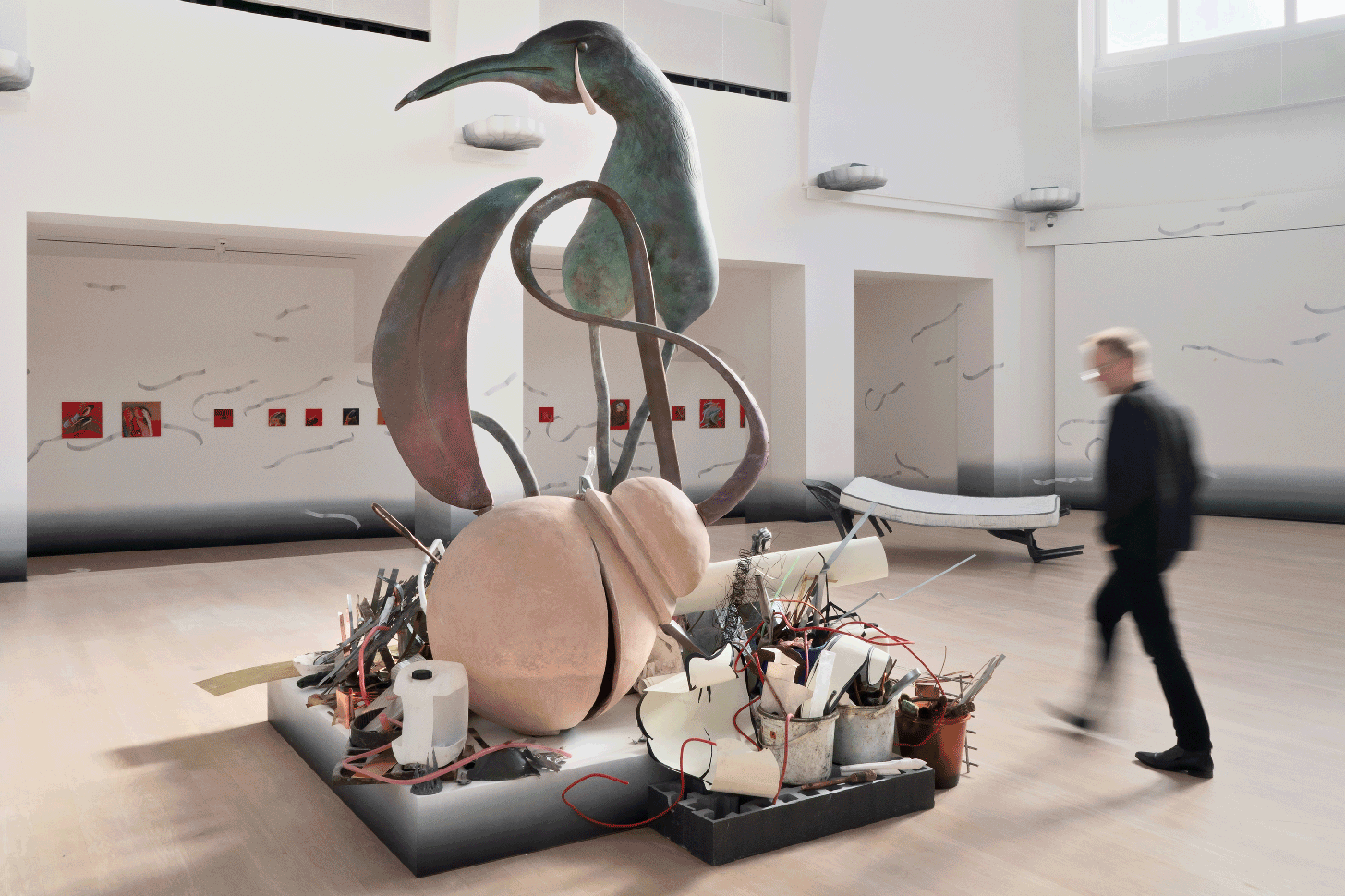Mother Tongue
April 18–August 8, 2021
Goseriede 11
30159 Hanover
Germany
Hours: Tuesday–Sunday 11am–6pm,
Thursday 11am–8pm
The oeuvre of French artist Camille Henrot (b. 1978, Paris) revolves around fundamental questions concerning our present times: How can we bring order to the chaos of our lives? How do we deal with our simultaneous need for attachment and self-determination? How do we position ourselves in the face of societal concerns and personal expectations?
The exhibition Mother Tongue presents the works that reflect the ambivalent feeling of being torn between wanting to withdraw and desiring to participate at the same time—both on a personal and political level. In doing so, Henrot’s works connect the small private structures of relationships with the large systems in which we move in the world. “In many ways, the distance between the self and the world, the personal and the global, is a major preoccupation in my work,” the artist states and adds, “My work touches on issues of violence, sexuality, perversion, trauma and unresolved ethical problems.” Henrot emphasizes the responsibility we have as individuals towards the future, towards our communities and towards our survival as humans.
The exhibition title Mother Tongue encompasses a vast thematic field, which includes the complexity of motherhood, the formation of language, a corporeality, as well as empathy and emancipation. In her work, “the mother figure stands in as a symbol and reminder of our ethical and self-imposed duty to care for others, the environment, and other issues.” The artist asks: “What does it cost us to care? Can we care when we haven’t been cared for? Can we give something we haven’t received? Can we extend care on a consistent basis? How much self-protection and self-care do you need to be able to care for others?.”
Mother Tongue at Kestner Gesellschaft is the artist’s first comprehensive, institutional solo exhibition in Germany. On view are drawings, paintings and sculptures, many of them realized during the coronavirus pandemic and made especially for the exhibition at the Kestner Gesellschaft. Moreover, the exhibition includes the large-scale lime plaster frescoes Monday (2016) and the 3D film installation Saturday (2017).
Henrot was awarded the Silver Lion at the Venice Biennale in 2013 for her groundbreaking piece Grosse Fatigue, as well as the Carte Blanche at Palais de Tokyo in Paris in 2017, resulting in her monumental exhibition Days are Dogs. Her work has been recognized internationally with major solo exhibitions at the Palais de Tokyo in Paris (2017), the Kunsthalle Wien (2017), the New Museum in New York (2014), and at Tokyo Opera City Art Gallery (2019) among others. In 2021 the artist will also have a solo exhibition at the National Gallery of Victoria in Melbourne, Australia and participate in the Liverpool Biennial in England.
A comprehensive exhibition catalog will be published, including contributions from Emily LaBarge, Legacy Russell, Marcus Steinweg, Hélène Cixous, Seamus Kealy and an interview with the artist by the curator Julika Bosch as well as an introduction by the Kestner Gesellschaft’s Director Adam Budak. The catalog will be designed by Studio Thomas Spallek and published in German and English by Verlag Walther König (320 pages with extensive visual material of recent paintings and drawings).
The exhibition is generously supported by the Niedersächsische Sparkassenstiftung, Sparkasse Hannover, the VHV Stiftung, the Bureau des arts plastiques at the Institut Français, and the French Ministry of Culture as well as the Förderkreis of Kestner Gesellschaft.
Simultaneously on view
Lost and Found by the American artist Susan Hiller (1940–2019) is an audio collage of voices that recite anecdotes, songs, and memories in 23 different languages. The languages are extinct or nearly extinct. In her work, Susan Hiller combines an archaeological approach with an interest in the collective subconscious.
The American artist Sharon Lockhart (b. 1964, Norwood, Massachusetts, USA) presents a glowing neon sign that reads The Future Should Always Be Better on the facade of the Kestner Gesellschaft. The slogan seems highly topical in times of crisis; at the same time, the artist addresses a universal societal expectation of a better future.
The first artist to be featured in the project space Shifting Present is Moyra Davey (b. 1958, Toronto, Canada), who works in photography as well as film and makes writing her artistic practice. In the film My Saints (2014) she asks her family and friends to reflect upon some passage of The Thief’s Journal, the radical, semi-autobiographical novel by the French writer Jean Genet.
The special presentation Joseph Beuys / 100! commemorates two outstanding solo exhibitions of Joseph Beuys in 1975 and 1990 at the Kestner Gesellschaft and the artist himself, on the occasion of the Beuys centennial year 2021.
The performance Broken Gargoyles by Diamanda Galás (b. 1955, San Diego, California) will be presented on August 8, 2021 at the Kestner Nicolai Chapel. Broken Gargoyles is a sound installation by the singer, composer and pianist Diamanda Galás, composed in 2020 during the onset of the COVID-19 pandemic, in a collaboration with the artist and sound designer Daniel Neumann. Based on two poems by German poet Georg Heym—Das Fieberspital and Die Dämonen der Stadt—which he wrote in 1911, the sound work is composed of natural as well as heavily processed voices, manipulated piano and other various sound sources.



